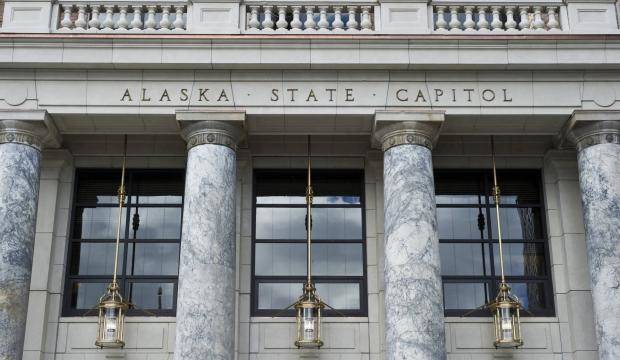The idea of moving Alaska’s capital away from Juneau has been around since statehood. In 1960, 56 percent of voters defeated a measure moving the capital to “the Cook Inlet-Railbelt Area,” with a gubernatorially-appointed committee dictating the site. In 1962, a measure moving the capital to “Western Alaska … within 30 miles of Anchorage” went down with 55 percent of voters opposed to “senior senators” picking three potential sites, the final venue to be selected by voters.
In 1974, 56 percent of Alaskan voters tentatively embraced the idea of moving the capital, at a time when many were new to Alaska in the frenzied days of oil exploration and development culminating in the building of the pipeline. The 1974 ballot measure called for a new capital city to be built at a place on a list chosen by a gubernatorially-appointed committee, mandating a western Alaska venue at least 30 miles from both Anchorage and Fairbanks, featuring at least 100 square miles of donated and public land. After passage, a committee came up with three sites: Larson Lake, Mount Yenlo and Willow, the last of which got over 53 percent of the votes in 1976.
In November 1978, the capital move pendulum swung back with an effort to ensure that all costs of moving the capital be disclosed and accepted by Alaskans before the project began. This was called the Fiscally Responsible Alaskans Needing Knowledge (FRANK) Initiative. A bond issue appeared on the same ballot, asking voters to approve $966 million in debt for a new capital city in Willow. The FRANK Initiative was approved by over 55 percent of voters while spending almost $1 billion on the new capital got a resounding “no” from 74 percent of those who voted.
In 1982, 53 percent of voters rejected spending almost $2.9 billion to build a new capital in Willow. This vote also repealed previously adopted capital move laws and initiatives, wiping the slate clean. The severe economic downturn in the late 1980s likely prevented the issue from resurfacing again for over a decade.
In 1994, the capital move saga returned with two competing measures before voters. Almost 55 percent said no to moving the capital to Wasilla, while over 77 percent of voters approved of a renewed FRANK Initiative to ensure that no capital move scheme could advance without ample information about its direct and indirect costs. The new iteration of the FRANK Initiative received strong support from the residents of Juneau and Fairbanks, the state’s second- and third-largest communities, likely because of concern over the continually growing size and power of Anchorage.
In 2017, the ghosts of capital movers past resurfaced. A group calling itself “Equal Access Alaska” formed with a stated goal of moving the Alaska Legislature from Juneau to Anchorage. Basing its arguments on public dissatisfaction with the Legislature and the debacle of an expensive Legislative Information Office (LIO) in Anchorage that was never occupied, this group registered to collect signatures to place an initiative to move the Legislature on the ballot in 2020.
Fortunately for fiscally responsible Alaskans, the Alaska Committee stands ready, able and willing to fight against specious efforts to move the Legislature in a way that would provide no more meaningful access to Alaskans and conceivably cause greater costs. With a full network of LIOs across Alaska, and with technological improvements allowing for easy, effective audio- and video-teleconferencing, Alaskans who want to participate in the legislative process have all necessary means at their disposal.
Preventing a legislative move requires effective diplomacy and outreach. One component of the public relations efforts run by the Alaska Committee is having booths at the Alaska State Fair in Palmer and the Tanana Valley State Fair in Fairbanks. The Alaska Committee did this for a decade but ceased the effort a few years ago. The good news is that Juneau booths will return to the fairs in 2018. Juneau residents interested in helping out can learn more from the Alaska Committee at http://www.alaskacommittee.com/. Efforts to move the Capital City or the Legislature must be taken seriously for the threat they represent to the public purse in these fiscally challenging times, and opportunities exist for interested Alaskans to get involved in a meaningful way.
• Benjamin Brown is a lifelong Alaskan and an attorney who lives in Juneau.

